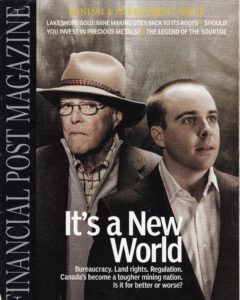For an extensive list of articles on this mineral discovery, please go to: Ontario’s Ring of Fire Mineral Discovery
McGuinty Meets with Chairman Li Ka-shing and CEO Eric Huang
Leaders from Hong Kong’s business community met Ontario Premier Dalton McGuinty and ministers Sandra Pupatello and Michael Chan to discuss investment opportunities in Ontario.
Premier McGuinty spoke at a reception hosted by the Canada-Hong Kong Chamber of Commerce. Guests included leaders in mining and financial services. McGuinty credited Ontario’s strong financial services sector for helping it weather the global recession better than most other economies. He also talked about the government’s plans to develop the Ring of Fire, an area in Northern Ontario that contains one of the world’s largest chromite deposits.
Guests also included representatives from Hong Kong universities who came to learn about Ontario’s plans to boost international enrolment in postsecondary institutions by 50 per cent over the next five years.
Earlier, Premier McGuinty met with Li Ka-shing, Chairman of Cheung Kong Limited and Hutchison Whampoa. The Premier and Mr. Li discussed Ontario as a growing North American location for new investment and trade. McGuinty also met with Eric Huang, CEO of CITIC Merchant Bank.
Premier McGuinty also honoured Canadian soldiers at Sai Wan War Cemetery, resting place for soldiers who died in the defence of Hong Kong during the Second World War. McGuinty laid a wreath to honour the over 550 Canadian soldiers who died, 22 of whom were from Ontario.























